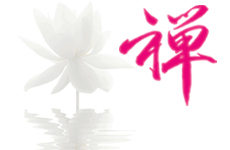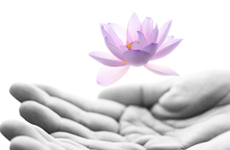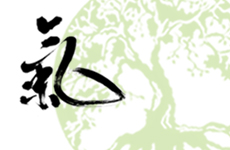
The Magic of Purple Corn
The Peruvians use the purple corn kernels as food and also to make a fermented drink, called chica morada, which is said to lower blood pressure and reduce inflammation. The  Peruvian Andes people prize this purple color, and there is no wonder why. The intense color is the result of anthocyanins, water-soluble vacuolar pigments that may appear red, purple, or blue, that has antioxidant qualities. The purple variety of the sweet corn corn, also known as zea mays, has one of the highest antioxidant ratings. Anthocyaninins are being studied for their ability to improve everything from cardiovascular health to collagen regeneration. Purple corn has been found to have normalizing effect on many systems of the body and even able to shrink cancerous tumors.
Peruvian Andes people prize this purple color, and there is no wonder why. The intense color is the result of anthocyanins, water-soluble vacuolar pigments that may appear red, purple, or blue, that has antioxidant qualities. The purple variety of the sweet corn corn, also known as zea mays, has one of the highest antioxidant ratings. Anthocyaninins are being studied for their ability to improve everything from cardiovascular health to collagen regeneration. Purple corn has been found to have normalizing effect on many systems of the body and even able to shrink cancerous tumors.
Whole, fresh purple corn from Peru has a much higher average content of antioxidants than blueberries; the average anthocyanin content was found to be 16.4 mg/g compared to fresh Blueberries which contain a range from 1.3 to 3.8 mg/g. The seed coat or outer hull held the greatest concentration of anthocyanins, contributing 45% of the total content. The in vitro anti-radical capacity of Purple Corn Extract against the DPPH radical was also greater than that of blueberries, showing higher antioxidant values than many other commercial food plants.
 The most abundant anthocyanin found in Purple Corn, called C3G, which has been proven to be among the most potent antioxidants in existence, protecting animals against tumors and all sorts of liver-killing chemicals. One study that compared C3G to 13 other anthocyanins using oxygen radical absorption capacity (ORAC) as its measure. The ORAC rating of C3G came out on top and was 3.5 times that of Trolox, a synthetic and potent antioxidant analogue of vitamin E.
The most abundant anthocyanin found in Purple Corn, called C3G, which has been proven to be among the most potent antioxidants in existence, protecting animals against tumors and all sorts of liver-killing chemicals. One study that compared C3G to 13 other anthocyanins using oxygen radical absorption capacity (ORAC) as its measure. The ORAC rating of C3G came out on top and was 3.5 times that of Trolox, a synthetic and potent antioxidant analogue of vitamin E.
Oxidative stress (where antioxidants produced by bodies to inactivate oxygen-based free radicals is insufficient) and immune suppression caused by UV light are well-known for their role in the induction of skin cancers. In one in vitro study, it was found that C3G has an ability to inhibit the oxidation of fat cells induced by UVB. In a study of oxidative injury to the liver, male rats fed a diet containing 0.2% C3G (2 g/kg of feed) for 2 weeks beforehand showed significantly less liver injury compared to the control group.
All fruits and vegetables that are rich in anthocyanins have compounds that can slow down the growth of colon cancer cells; Scientists from Ohio State University  compared the chemoprotective properties of anthocyanin extracts from purple corn, chokeberry, bilberry, purple carrot, grape, radish, and elderberry for their ability to inhibit colon cancer cell proliferation. Foods with the highest levels of the Anthocyaninins are the most effective at slowing cancer growth. Extract derived from purple corn was the most potent, taking only 14 micrograms of C3G to reduce cancer cell growth by half. Chokeberries and bilberries were also almost as effective. Foods with less of the pigments, such as radishes and black carrots, slowed the growth of colon cancer cells by 50% to 80%. The anthocyanins from purple corn and chokeberries was also found to completely stopped the growth of cancer cells and killed about 21% of cancer cells without having any effect on healthy cells.
compared the chemoprotective properties of anthocyanin extracts from purple corn, chokeberry, bilberry, purple carrot, grape, radish, and elderberry for their ability to inhibit colon cancer cell proliferation. Foods with the highest levels of the Anthocyaninins are the most effective at slowing cancer growth. Extract derived from purple corn was the most potent, taking only 14 micrograms of C3G to reduce cancer cell growth by half. Chokeberries and bilberries were also almost as effective. Foods with less of the pigments, such as radishes and black carrots, slowed the growth of colon cancer cells by 50% to 80%. The anthocyanins from purple corn and chokeberries was also found to completely stopped the growth of cancer cells and killed about 21% of cancer cells without having any effect on healthy cells.
Purple corn color has shown to suppress breast cancer and be effective in preventing liver cancer;
In Japan, scientists examined the influence of dietary purple corn color (PCC) extracted from purple corn seeds on induced mammary cancer in genetically damaged rats. PCC was found to significantly inhibit the cancer growth, and also significantly inhibited the growth of human mammary cancer implanted in the rats. PCC and C3G inhibited cell viability and induced cell death in the mammary tumor cells. Other scientists in Japan have found that PCC may also be effective as a chemopreventative agent against liver pre-neoplastic lesion development.
Hypertension and cholesterol have been found to be lowered by blue corn;
Japanese scientists fed the color from purple corn, purple sweet potato, and red radish to spontaneously hypertensive rats and found that the blood pressure and heart rate of the rats decreased compared to the control group.
Other Japanese researchers testing for oral toxicity, found no-observed-adverse-effects but also found that total cholesterol, phospholipids, and triglycerides were significantly lowered in both female and male rats.
Potential to fight obesity and diabetes;
Japan researchers compared the body weights of male mice fed a high-fat diet with another group fed the same diet but with the addition of purple corn color (PCC) which provided C3G (0.2% or 2 g/kg of feed), with a control group not fed a high-fat diet or PCC. The results after 12 weeks were obvious; the mice group fed the additional PCC showed significantly less signs of developing obesity than the group with the same high fat diet. The fatty tissue growth showed no increase in the PCC-HF group and was also not significantly different from the control group, which was found growing in size in the HF-diet group. The HF-diet group also developed a state of hyper-glycemia along with an over-production of insulin. However these were completely normal in the PCC-HF group.
 Researchers in China found that the natural source of anthocyanins in purple corn remain stable over a wide range of temperatures and time. This means it can be cooked or baked without losing its potency. Lets hope purple corn comes as available in all countries as it is in South America. In the meantime there are also plenty of other purple vegetables that we should be tucking into. There are beautiful purple cauliflowers, purple beans, your trusty purple cabbage, purple brussel sprouts and even carrots used to be purple before the orange ones became more popular. Thinks its time we got back to our purple roots! (excuse the pun).
Researchers in China found that the natural source of anthocyanins in purple corn remain stable over a wide range of temperatures and time. This means it can be cooked or baked without losing its potency. Lets hope purple corn comes as available in all countries as it is in South America. In the meantime there are also plenty of other purple vegetables that we should be tucking into. There are beautiful purple cauliflowers, purple beans, your trusty purple cabbage, purple brussel sprouts and even carrots used to be purple before the orange ones became more popular. Thinks its time we got back to our purple roots! (excuse the pun).
References and further reading:
Various Anthocyanin-Rich Extracts Effects on the Inhibition of Colon Cancer Cell Growth



One Comment
Hey very nice blog!